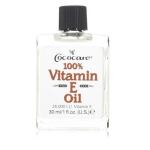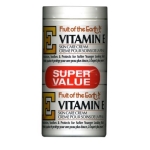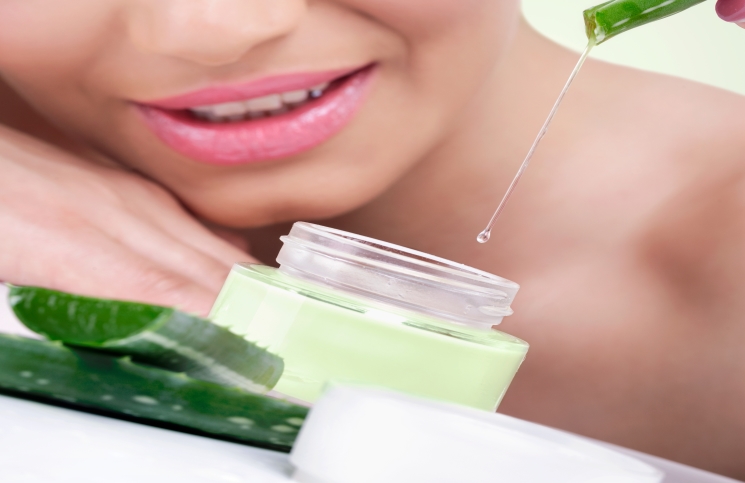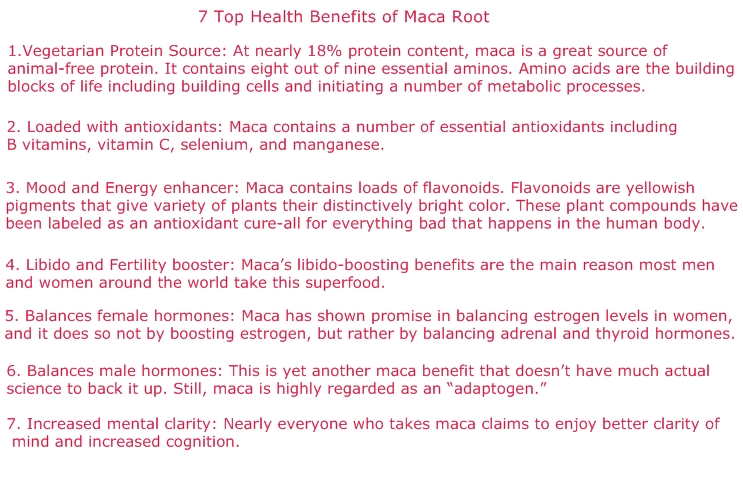Vitamin E is a fat-soluble antioxidant vitamin that can be taken internally or topically on the skin and hair. It’s one of the most potent and busy of all antioxidant vitamins in the body and is just as important as vitamin C for maintaining heart and immune system health. People who don’t take a quality supplement or who don’t eat a diet rich in high fat oily nuts are most at risk for a deficiency.
There are two main forms of this vitamin:
1.Tocopherols (alpha, beta, gamma, delta)
– This is the most studied form of the vitamin, and often claimed to be responsible for all the positive health benefits offered by this vitamin. Tocopherols work as antioxidants in the blood and on the surface of the skin to prevent oxidative damage to cells.
2.Tocotrienols (alpha, beta, gamma, delta)
– Tocotrienols have far less research behind them, but recent studies indicate this form of vitamin E may in fact be much more potent than tocopherols. Certain evidence indicates this particular antioxidant helps prevent nervous system damage, brain damage done by strokes, and arteriosclerosis far more effectively than vitamin E in the form of tocopherols.
Each type has 4 sub-forms: alpha, beta, gamma, delta. In literature and on the back of vitamin bottles, you’ll see them listed with the first letter of each (“a”, “b”, “g”, “d”) followed by the form of vitamin, separated by a colon: e.g., “a-Tocopherol”, “b-Tocotrienol”, etc.
Dosage Recommendations:
When applying vitamin E topically, use it as liberally as you wish. There are no side effects from topical usage, except increased elasticity and overall glow!
The table below lists what the National Institutes of Health recommend for adequate internal intake.
The NIH’s RDA of Vitamin E for all Ages:
| Group | RDA for Vitamin E |
| Children 1 – 8 years | 7 mg (10.5 I.U.) |
| Children 9 – 13 years | 11 mg (16.5 I.U.) |
| 14 years of age and up | 15 mg (22.5 I.U.) |
| Pregnant Women | 15 mg (22.5 I.U.) |
| Breastfeeding Mothers | 19 mg (28.5 I.U.) |
The numbers above are far below what natural health/nutrition experts and doctors, like Dr. Andrew Weil recommend for optimal health. Dr. Weil, for instance, recommends at least 80 mg a day of this important fat soluble vitamin. He suggests that we strive to take a product with at least 10 mg of tocotrienols, and if that’s not possible then look for a product with a mixture of natural tocopherals from different sources at a minimum dosage of 400 I.U. (learn more from Dr. Weil’s site).
Synthetic vitamin E (dl-alpha-tocopherol) has shown itself to be at least half as effective as natural-sourced “E” at raising plasma levels of the vitamin. Don’t be completely dissuaded from using though if supplement costs are of concern. They’re cheaper yes, but many of the tests you’ll find cited on this page used the synthetic version.
The US Government’s National Academy of Sciences Institute of Medicine lists 1,200 I.U. of vitamin E as being a dose that may lead to adverse side effects if taken for long periods of time.
Side Effects of Too Much Vitamin E
The most common side effect of “hypervitaminosis E” is that it leads to vitamin K deficiencies. To learn more about vitamin K and how it works in the body, refer to this article.
With that being said, side effects of taking too much are extremely rare. Not to mention that high doses have proven very effective at significantly reducing oxidative stress in the arteries and other tissues in the body.
Natural Blood Thinner:
Vitamin E is a natural blood thinner. Naturopathic doctors recommend 200 – 400 I.U. of supplemental vitamin E daily (as mixed tocopherols) to prevent the blood clots that cause heart attacks and strokes.
To prevent over-thinning the blood, it’s recommended that anyone who’s taking blood thinners like Coumadin limit themselves to no more than 400 I.U. total, from diet and supplement sources combined.
*Always consult your doctor about any supplements you’re considering taking if you’re on any medication.
Vitamin E Health Benefits:
1.Heart Health
Vitamin E, along with other fat and water-soluble antioxidants, prevents the oxidation of low-density-lipoproteins (LDL) in the bloodstream. This “bad” cholesterol causes a chain reaction of negative processes in the arteries when it’s oxidized, including the increased production of inflammatory cytokines which irritate the walls of the arteries and cause them to become sticky, allowing oxidized cholesterol and lipids to form plaque and eventually to clog the artery. Worse, calcium in the blood sticks to plaque and can cause calcium to form on the oxidized lipids.
At doses of up to 1,200 I.U. per day – way higher than the NIH’s recommended daily dose – LDL (bad cholesterol) oxidation in the blood was much lower in test subjects than in individuals who took only a 400 mg dose, which is most commonly what’s recommended by healthcare practitioners (source).
2.Immune System Booster
Vitamin E’s effect on immune function has been studied at length. Results have shown without a doubt that diets higher in “E” lead to improvements in several immune system health markers. This vitamin has even been shown to improve immune function in people living with AIDs (source). However, supplementation may help with some immune maladies, but not necessarily all.
This benefit of vitamin E is mostly related to people with poor T-cell function, such as the elderly and those with immune-system disorders like AIDs. Evidence is slightly contradictory though: a study performed on over 600 elderly patients living in a nursing home showed daily doses of 200 I.U. of vitamin E for a year lowered the patient’s susceptibility to the common cold, but had no marked effect on lower respiratory tract infections; both of which are common in the elderly (source).
3.Brain Health
Vitamin E helps prevent cell membranes and the omega-3 fatty acid, DHA from oxidizing. 97% of our body’s DHA content is found in our brain tissue. Low levels of tocopherols and tocotrienols have been shown to increase the incidence of mild neurological dysfunction and a link also exists between low plasma levels of vitamin E and Alzheimer’s. People with the highest plasma levels of “E” show up to a 15% improvement in brain function over those with sup-par levels (source).
For people at high risk for stroke, tocotrienol levels in the blood are particularly important for preventing glutamate-induced brain cell death; the phenomenon that causes wide-spread cell death to the brain during a stroke. A study performed at the Ohio State University Medical Center showed that not only does adequate levels of tocotrienols in the blood help to prevent the damage done by a stroke, but also helps to rescue the cells from untimely doom after a stroke occurs (source).
5.Kidney Disease
People who suffer with mild or extreme kidney disease generally suffer from high blood pressure as a result of increased free radicals in the blood causing the oxidation, which later leads to hardening of the arteries. Another high blood pressure cause that’s been identified with kidney disease sufferers is their inability to produce adequate levels of nitric oxide; a chemical produced by the body which relaxes blood vessels.
A rat-based study published in the 2002 issue of Hypertension journal showed conclusively that vitamin E is instrumental at reducing the blood-pressure-raising side effects of kidney disease: at high doses of vitamin E, the kidney resected rats used in the study had their nitric oxide levels returned to normal and systolic blood pressure dropped by as much as 30 mm of mercury.
6.Age-Related Macular Degeneration
Vitamin E has a massive effect on overall eye health. It’s an antioxidant which helps prevent oxidative damage inside the eyes. It protects the health of cell membranes in and around the eyes. Vitamin E is also essential for DNA expression in the body.
All of these factors and more have shown to protect the eyes of people who’re susceptible to age-related macular degeneration. Studies supported by the National Eye Institute have shown 400 I.U. of vitamin E every day to help slow the progression of the disease in those afflicted by up to 25 percent.
7.Better Breathing (Asthma Relief)
The link between breathing problems like asthma and even more serious conditions like lung cancer, and COPD (sometimes referred to as “chronic lung disease”) often correlate with vitamin E levels in the body. If you keep up on healthcare news, you’ve likely read that some studies actually show a link between high levels of “E” and the incidence of lung disease, so there’s still a hot debate brewing.
With that said, vitamin’s A, C and E (the “ACE Antivitamins”) have shown to be effective at improving lung health, with vitamin E on its own offering a modest 10 percent reduction in the chances of contracting chronic lung disease and an overall reduction in asthma symptoms when levels are kept high (source).
8.Cancer Treatment
This benefit is another hotly-debated topic when it comes to vitamin E. So much so that an expert pops up every day extoling the virtues of vitamin E in cancer prevention and treatment, only to have another come along the next instant and say that too much vitamin E can increase your chances of contracting cancer. Everything from lung cancer, prostate cancer (see this study) and even ovarian cancer have been blamed on the over-consumption of vitamin E.
Keep in mind that there are many other studies that show how preposterous it is to blame cancer on an essential vitamin, like this one. Antioxidants are the only thing that stands between you and the oxidative damage that can lead to cancer and other health problems. Stick to the recommended doses and you’ll be fine!
9.Improved Liver Health
Fatty liver disease affects up to 25 percent of all Americans and leads to inflammation in the liver and consequently, the rest of the body due to its huge role in ridding the body of toxic invaders. Being one of the body’s preferred antioxidants, vitamin E has shown promise in halting the oxidative damage done to the liver when excess fat is present in the organ.
The American Liver Foundation recommends doses of this antioxidant up to 800 mg daily to prevent and combat the complications of fatty liver disease – a common problem that leads to deadly cirrhosis and other complications like type II diabetes.
10.Reduction in Menstrual Symptoms
Menstrual pain (primary dysmenorrhea) is a major problem for all women until they hit middle age. While younger women are typically more prone to this issue, older women still have to deal with the occasional bought of cramps and associated pain. A dose of 500 mg of vitamin E every day during your period may help to reduce cramping and pain during menstruation (source).
11.Anemia Prevention & Treatment
Anemia is not just an ailment that occurs because you don’t get enough iron in your diet. It also happens when there’s widespread oxidative damage taking place in the red blood cells.
The body can’t keep up with red blood cell production and uses way more iron than those afflicted with oxidation issues can consume. Most often this illness is triggered by low levels of antioxidant vitamin’s C and E. Adequate vitamin E intake has been proved essential in treating people suffering from this problem (source).
12.Altitude Sickness
Antioxidants like vitamin’s C and E have also been used for altitude sickness for years, with great results. This may sound far-fetched, but keep in mind that altitude sickness is a direct result of low oxygen levels. At 8,000 feet in the air, oxygen is reduced by half that found at sea level.
This causes the blood to thicken and become more toxic. The toxicity causes numerous symptoms, but adding a powerful antioxidant to the mix can stop altitude sickness in its tracks and leave you ready to hit the ground running when you land!
13.Improvements in the Appearance of Skin
Oxidative damage wreaks havoc on the surface of our skin. Vitamin E has long been used as a topical restorative – including dry skin, wrinkle removal, stretch mark prevention and reduction in the appearance of scars. Apply a vitamin E serum or cream to the skin liberally and often for best results.
Applying topical vitamin E prior to sun exposure can reduce UV exposure because it absorbs the wavelengths that are most damaging to the skin and stabilizes them to reduce oxidative stress on the skin cells.
14.Suppository Benefits
Take vitamin E rectally or vaginally for relief from minor dryness or discomfort. Some women, particularly aging women, take a suppository 30 – 60 minutes before intercourse as a natural sexual lubricant.
Food Sources of Vitamin E:
The table below lists some of the most common sources of vitamin E through dietary sources. The richest natural source is wheat germ oil. Nuts are also rich in vitamin E, but keep in mind that all sources high in vitamin E are also high in calories and don’t come close to the doses recommended by trusted healthcare professionals like Dr. Weil and Dr. Mercola. As you’ll note, few sources below offer very high doses of the vitamin per serving.
| Food Source | Milligrams (mg) per serving |
| Wheat germ oil | 1 tablespoon 20.3 (mg) |
| Sunflower seeds, dry roasted, | 1 ounce 7.4 (mg) |
| Almonds, dry roasted, | 1 ounce 6.8 (mg) |
| Sunflower oil | 1 tablespoon 5.6 (mg) |
| Safflower oil | 1 tablespoon 4.6 (mg) |
| Hazelnuts | dry roasted, 1 ounce 4.3 (mg) |
| Peanut butter | 2 tablespoons 2.9 (mg) |
| Peanuts | dry roasted, 1 ounce 2.2 (mg) |
| Corn oil | 1 tablespoon 1.9 (mg) |
| Spinach, boiled | ½ cup 1.9 (mg) |
| Broccoli, chopped, boiled, | ½ cup 1.2 (mg) |
| Soybean oil | 1 tablespoon 1.1 (mg) |
| Kiwifruit | 1 medium 1.1 (mg) |
| Mango, slide, | ½ cup 0.7 (mg) |
| Tomato, raw, | 1 medium 0.7 (mg) |
| Spinach, raw, | 1 cup 0.6 (mg) |
Top 3 Vitamin E Supplements
#1 View View |
#2 View View |
#3 View View |
|
| Brand | Kirkland | Solgar | Nature Made |
| Overall Rating | 5 / 5 | 4.8 / 5 | 4.5 / 5 |
| Serving Size | 1 Softgel | 1 Softgel | 1 Softgel |
| Price/Serving | $0.03 | $0.13 | $0.09 |
| Effectiveness | 5 / 5 | 4.8 / 5 | 4.5 / 5 |
| Quality | 5 / 5 | 4.8 / 5 | 4.5 / 5 |
| Taste | 5 / 5 | 4.7 / 5 | 5 / 5 |
| Digestibility | 5 / 5 | 4.8 / 5 | 4.5 / 5 |
Vitamin E Supplement and Skincare Product Reviews
The following recommendations are few, but these are the very best vitamin E products you’ll find anywhere, and each can easily fit into anyone’s budget. I recommend the following because they’re all natural products that do what they say they’ll do and are frequently rated five stars for their quality, price, and manufacturer’s reputation.
Kirkland Signature Vitamin E 400 I.U. 500 Softgels – Best Vitamin E Supplement

The Kirkland Signature brand is king when it comes to low-cost supplements that don’t sacrifice in the quality department. This is why Costco uses their health products exclusively. This affordable bottle of 500 softgels offer up a daily dose of 400 I.U. of vitamin E and contains no yeast, artificial coloring or preservatives. With loads of five star reviews online, there’s no need to look any further for an effective vitamin E supplement. This product is 100% USP tested and approved.
Cococare 100% Vitamin E Oil – Best Vitamin E Oil For Your Body

Airborne chemicals, UV rays, contact with caustic chemicals, and certain lifestyle factors all lead to our skin constantly being hammered with free radical damage. This causes dryness, flaking, itching, and wrinkles to form. This clear topical vitamin E formulation from Cococare is perfect for invigorating your skin with the antioxidants and moisture it needs to heal and stay healthy. Vitamin E oil is perfect for soothing sunburned skin and is the most common ingredient found in scar prevention/reduction products, and stretch mark creams. Why pay triple for such products when you can get the main effective ingredient at this price?
Fruit of the Earth Vitamin-E Cream – Best Vitamin E Cream For Your Face

This is another topical product containing vitamin E, collagen, elastin and sunflower oil, along with aloe and wheat germ emollients combined in a long-lasting cream. Fruit of the Earth always delivers on their skincare products and this combination cream is perfect as a bedtime treat for your face, hands, legs and feet. One of the things valued most about this product by users is that it’s non-scented and doesn’t leave skin feeling greasy. Combine nighttime use of this product with the lighter Cococare during the day for maximum glow and softness in your skin!
NOW Foods, E-Oil 32,000 IU 1 oz – Best Vitamin E Oil For Under-Eye Circles and Forehead Wrinkles

This NOW Foods topical vitamin E oil is marketed for all over body use, but I recommend this one for use on the face and around the eyes. This single ounce bottle contains a whopping 32,000 I.U. of vitamin E, immersed in 100% pure virgin olive oil for even more moisture-infusing effect. This stuff is great for laugh lines, crows feet, dark under-eye circles and forehead wrinkles. Another great benefit of going with NOW Foods products is they never test on animals.
Carlson E-gem Oil Drops 10 I.U. per Drop of Vitamin E – Best Vitamin E Lubricant

Nobody likes to talk about suppositories, but we all have to use them at some point in our lives. Most common, vitamin E suppositories like this all natural formula from Carlson are great for women approaching or already past middle age, who don’t produce as much natural lubrication as they used to. Vitamin E suppositories make for a great natural sex lubricant and also help to prevent yeast infections in women of all ages. This product can also be taken rectally for minor irritation and for conditions like painful Proctalgia fugax, rectal bleeding and rectal cancer.
Summary:
Vitamin E has far reaching benefits to health. It’s one of the most potent of all fat-soluble vitamins and offers very little chance of over-dosing even with doses 80 times the RDA from the NIH. As a skincare booster, vitamin E is one of the most common ingredients you’ll find in expensive skincare products for wrinkles, stretchmarks, scar removal and moisturizing lotions and creams.
Considering the health risks that can happen when you don’t get enough, there’s no reason not to get more of it from your diet and supplement sources. Vitamin E does a body good – inside and out!





After using vitamin E oils for the eye area I decided to stop using other eye creams all together. I just use a small drop and massage it around my eyes and the effects are visible right away; the dark circles are less visible and the skin looks a lot brighter and healthier. My only regret is not using it sooner; I’ve spent a fortune on creams and moisturizers only to find that the natural approach is way better in this case.